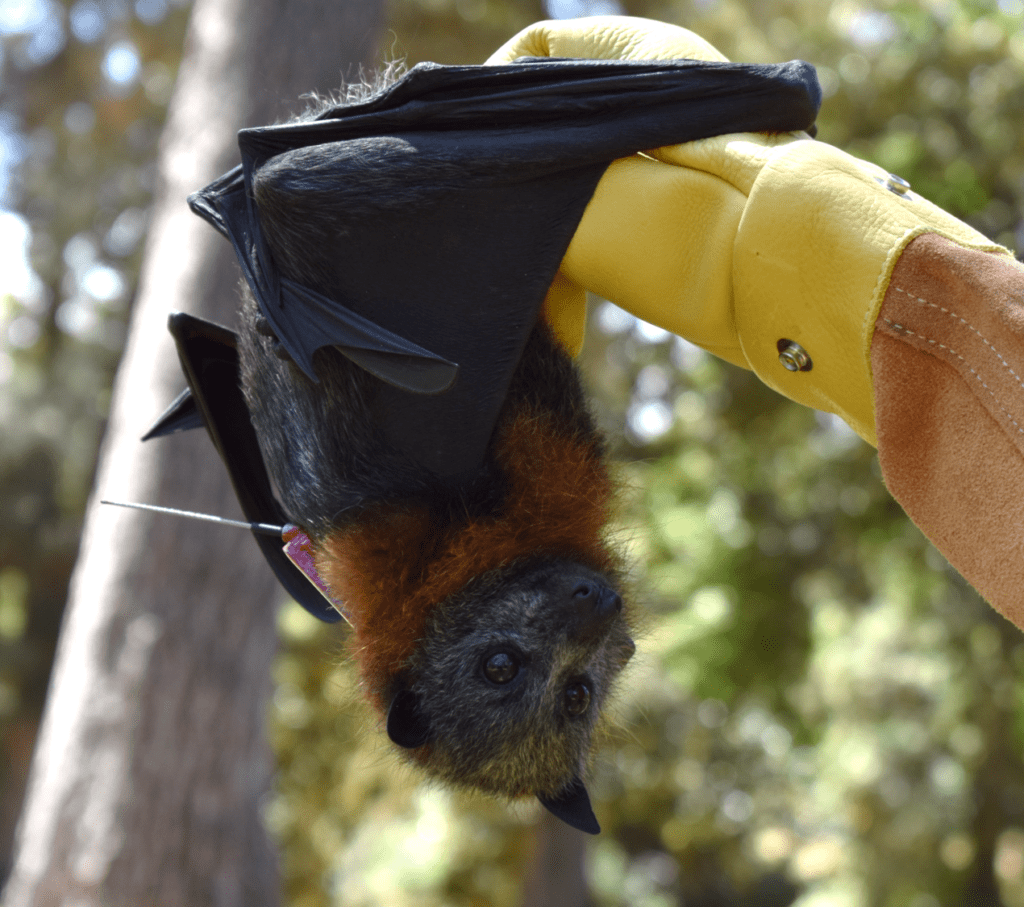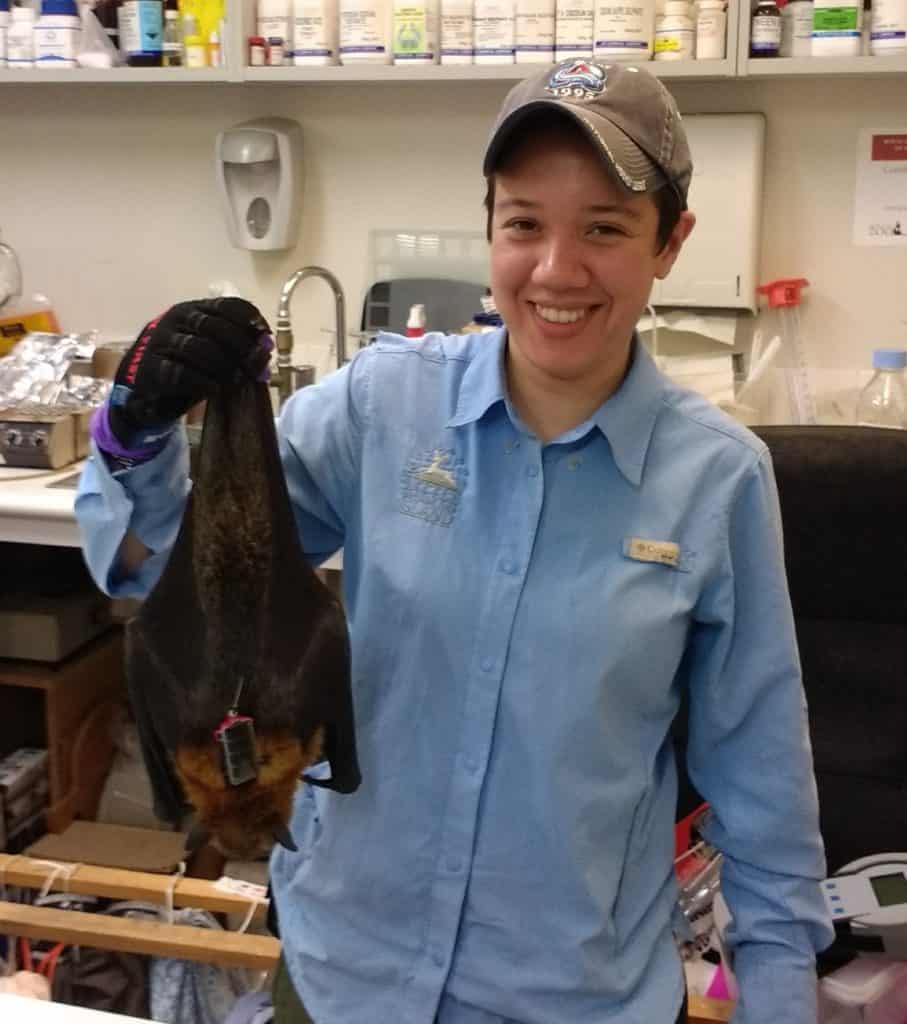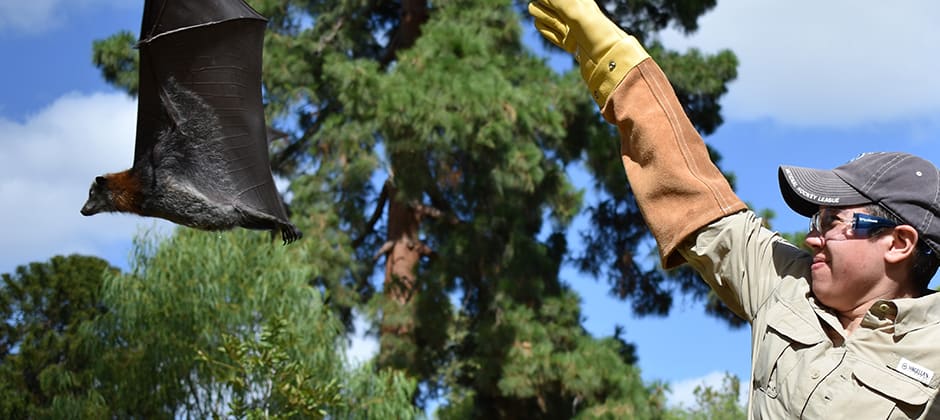Share this article
Bats face complicated links between contaminants and disease
Cecilia Sánchez was studying flying foxes in Australia when she discovered that bats captured in areas with a larger human impact tended to have higher concentrations of metal contaminants in their fur. She also examined relationships between concentrations of different metals and the number of ectoparasites living on the bats.
“This dual burden of metal contaminants and parasitism got me thinking about how heavy metals or other pollutants that humans generate can influence wildlife infection dynamics,” said Sánchez, who was a PhD student at the University of Georgia when she performed the research. The lead author of a study on these dynamics published in Biology Letters, she is now a research scientist at EcoHealth Alliance.
In the study, Sánchez and her colleagues developed a mathematical model to examine how two threats — toxicant exposure and infectious disease — could affect wildlife populations. They focused on flying foxes since these animals, also known as fruit bats, often feed on fruiting plants in parks, yards and other human environments, where they face exposure to heavy metals or pesticides. Flying foxes are also reservoir species for viruses that can be transmitted to humans and wildlife.

A flying fox is fitted with a radio collar. Credit: Michelle Power
“We thought there would be complicated dynamics and a really nice system to address with a model,” she said. “The model allows us to explore different underlying processes and outcomes in a system that is difficult to study from observational work.”
Sánchez and her colleagues incorporated previously published information about the flying foxes into their model, including their lifespan and how long they may carry viruses. Then, dividing the landscape into pristine areas and those contaminated with heavy metals, pesticides or other pollutants, they developed a model simulating the bats engaging with different landscapes with varying proportions of pristine versus contaminated habitat.
The team looked at three different scenarios related to pathogen transmission. In one scenario, transmission was equal in both pristine and toxicant-contaminated landscapes. In the other two scenarios, toxicants either reduced or increased pathogen transmission compared to pristine areas. In all of these scenarios, exposure to toxicants also reduced wildlife survival and movement.
In each scenario, they started with a population of 50,000 bats, 100 of which were infected. Then, they simulated the model for 50 years and noted the final bat population size, level of infection, and the density of infected animals in contaminated habitat, which they used as a proxy for spillover risk to humans.
They found that without any infection, wildlife population size decreased when toxicants were present, but not all that much. “That shows that on their own, toxicants weren’t having a strong effect on the system,” she said. “But then when we introduced infection, that’s when we started seeing real declines in population size and an increase in spillover risk.” In other words, when both toxicants and infection were combined, there was a larger cumulative effect on the bats.
The team also saw a surprising outcome from their models. There were instances where contaminated habitat could actually benefit the bats by reducing disease transmission. When the amount of toxicant-contaminated habitat in the landscape was low, the overall wildlife population size increased. In this case, infected animals were trapped in the toxicant-contaminated habitat because their movement and survival were reduced by toxicants. This prevented the animals from going back to pristine habitat to seed new infections there.

Cecilia Sánchez holds a flying fox. Credit: Wayne Boardman
Sánchez said the study is important from a wildlife conservation perspective. “There are these interacting effects,” she said. “You can’t just think in isolation about only infection impacts on wildlife or only toxicant impacts. You really have to consider these things together to determine how they interact and understand what impacts on wildlife could be.”
From a human health perspective, spillover risk was minimized when the landscape was mostly pristine. Reducing environmental contamination could help reduce risks of pathogen transmission from wildlife to humans, she said.
Header Image: Cecilia Sánchez releases a flying fox. Recent research found dynamic effects of toxicants on wildlife disease spread. Credit: Louis Lignereux








